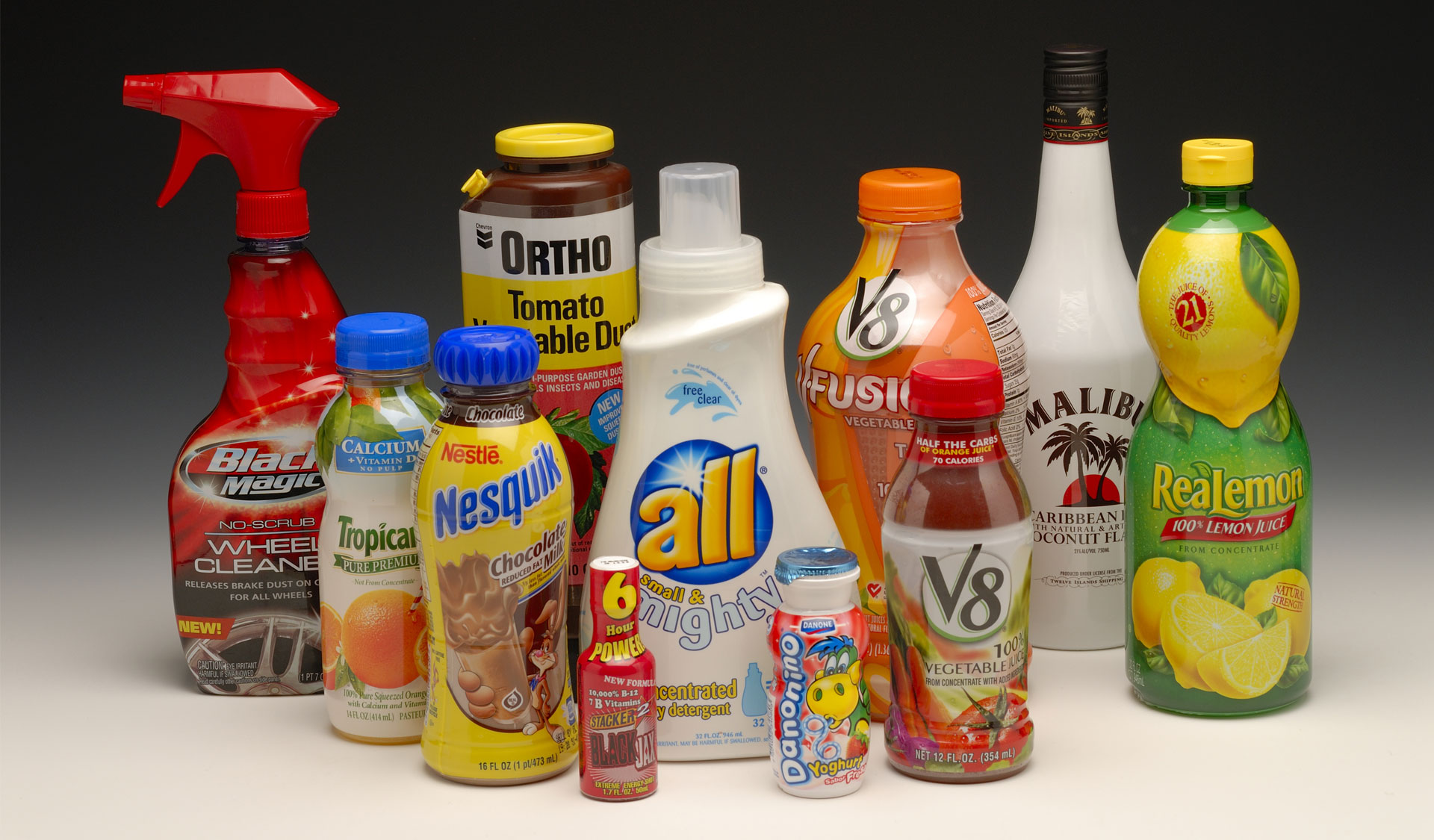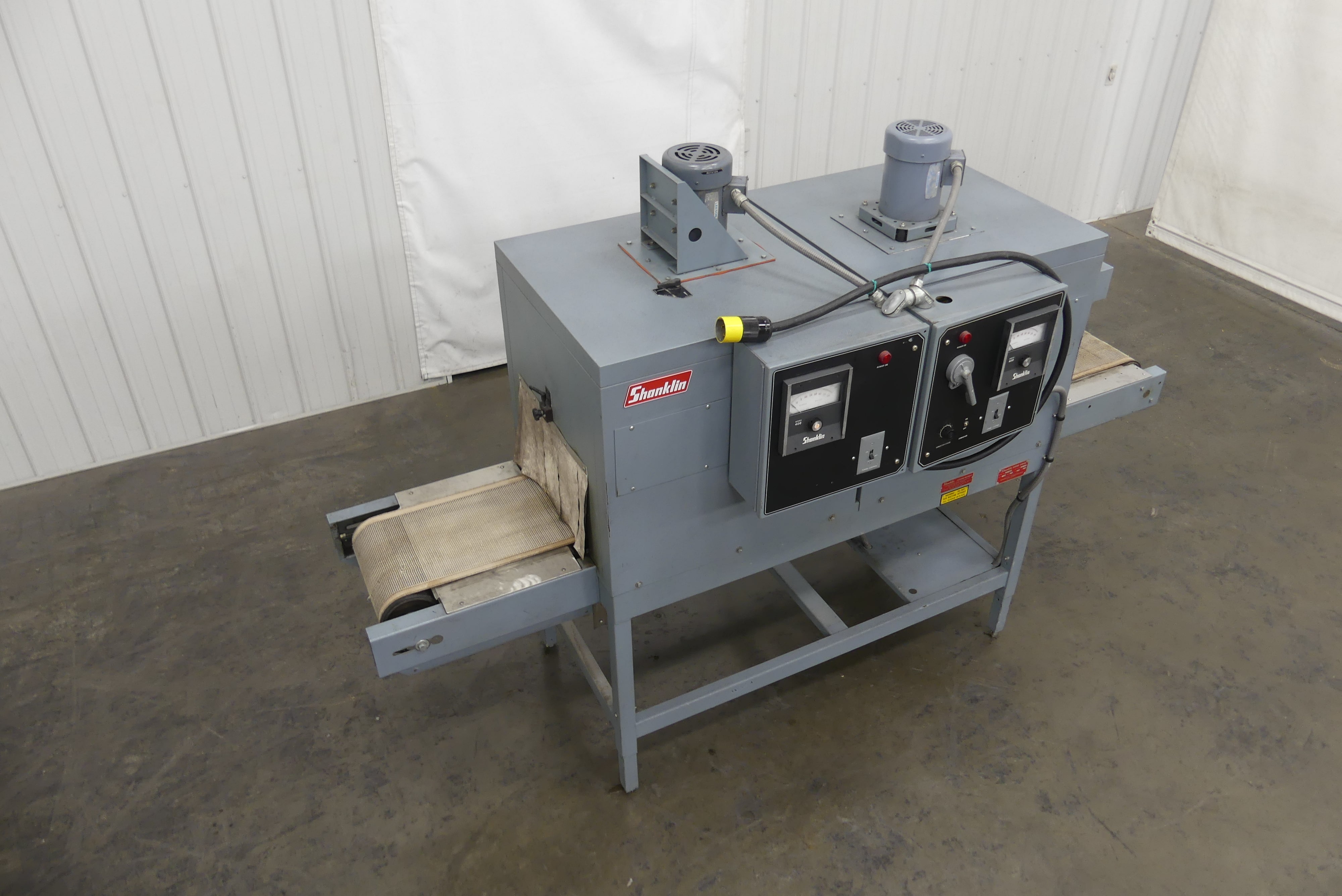Heat Shrink Tunnel
Designed to keep your products and branding consistent
Heat shrink tunnels are a staple in the packaging industry. As more specialty beverage and food brands arise, companies need a quick and effective way to brand their product and keep them safe from tampering. This is where a heat shrink tunnel is perfect for any manufacturer large or small. Learn more about a heat shrink tunnel in the article below.
What You Will Learn:
- What is a Heat Shrink Tunnel?
- Types of Heat Shrink Tunnels
- Types of Heat Chambers
- Conveyor Styles
- Upstream and Downstream Equipment
- Manufacturers
- Industries that Use Heat Shrink Tunnels
- Additional Options and Features
- What to Consider Before Buying
- Conclusion
What is a Heat Shrink Tunnel?
A shrink tunnel is a type of shrink equipment. This machine works by heating the air around a package that is wrapped in perforated shrink film. The heat causes the film to form a tight seal around the product. Most commonly, these are used for heat shrink labels, shrink packaging, and securing tamper bands onto a container. Some common examples of products that use shrink tunnels include:

(Source: https://www.bonset.com/heat-shrinkable-film-products/)
These machines have different heights that can accommodate your product. Before selecting your equipment, consider your product dimensions and what you need the heat shrink tunnel to apply. If you have questions about your product, sending samples to our team can help ensure you get the right equipment for your needs.
Types of Heat Shrink Tunnels:
There are two types of heat tunnels that are primarily used - electric heat tunnels and steam tunnels.
Electric Heat Shrink Tunnels
Electric heat tunnels, also known as hot air tunnels, use air as the heat transfer medium. They are typically double-walled, with a solid exterior wall and a perforated interior wall. Hot air tunnels are suitable for most applications because the amount of heat and airflow within the tunnel is highly customizable. This includes adjustable temperature controls, variable conveyor speeds, etc.
Below is an example of a machine running the SIGMA Integration team.
The advantages of an electric tunnel are:
- They’re compact and save you square footage on your production floor.
- They have a wider temperature range to fit your needs.
- They are generally lower in capital cost
However, there are also disadvantages to an electric heat shrink tunnel including:
- They can be less effective with irregularly shaped products.
- These are best for cans or products that don’t have a lot of curves. Due to their continuous flow of hot air, the local environment can heat up.
- This requires ventilation and also a heat curtain to keep the heat in the machine as much as possible.
Steam Heat Shrink Tunnels
Steam tunnels are another option. These machines use steam as the heat transfer medium. Steam is injected into the tunnel and transfers heat to the object. Steam tunnels are suitable for shrink applications but are unfit for drying or curing applications.
This machine has its own advantages and disadvantages. Some advantages are:
- They offer consistent heat distribution at relatively low temperatures.
- They also offer uniform application of heat to the product including oddly shaped bottles.
Disadvantages of this machine include:
- The objects are wet from condensation after exiting the tunnel.
- They also require a source for steam generation and need to be connected to a water source.
- They are larger in footprint so you must have enough space for them.
- They are also more difficult to find and can be more expensive due to the lack of them available.
Types of Heat Chambers:
Depending on your product you will also need to think about what heat chamber you will need, a single or dual-chamber. The dual-chamber heat tunnels are better in conjunction with high-speed wrappers, or in cases where there are irregular-shaped products. The dual-chamber allows the product to run through the heat longer, thus allowing the film to conform more to your specific packaging.
.jpg)

Single Chamber Dual Chamber
Conveyor Styles:
When deciding on a heat shrink tunnel, you will also need to decide what conveyor style you will need for your product. The types of conveyor styles are:
- Steel Wire Mesh is the most common style and is typically a “chain link” type conveyor. These conveyors are strong and durable and also don’t warp as easily due to their rigid structure. However, this also means that reconfiguring the conveyor path is limited.
- Roller Conveyors use rolling bars to move the product down the line and fit for larger products moving through the production line. Similar to the steel wire mesh these are durable but can be difficult to move.
-Nylon Wire Mesh is also durable and high resistance to heat and can withstand heavy impact. The main advantage here is that it is less prone to mildew which is beneficial for those who would use a steam heat shrink tunnel.
The best way to decide which conveyor is right for you is to consider the size of the product you will be running through the heat shrink tunnel. If you have a smaller product, the roller conveyor is not an option you would want to consider since the product could fall through the cracks. This is where sending in products to our team is crucial so we can properly match your needs with the equipment we have available. In particular, confirming that your product can fit the aperture of the machine. Some machines have wider or narrower apertures and testing with your product before can ensure you are getting the right equipment for your needs.
Upstream and Downstream Equipment:
If you are upgrading your equipment, increasing your production, or something in between, you may also need to consider adding upstream and downstream equipment to your production line. Below are some of the upstream and downstream equipment to consider:
Upstream:
Downstream
- Blow-Drying Machine (steam tunnel only)
Manufacturers:
There are many manufacturers that make the heat shrink tunnel, but below are some of the more popular companies:
- Shanklin
- Arpac
- Beseler
- HeatSeal
- Clamco
Industries that Use Heat Shrink Tunnels:
A heat shrink tunnel is versatile and is needed so that industries can label and package their products properly to prevent tampering and create a strong brand image. The main industries that use this machine are:
- Food & Beverage
- Pharma
- Medical
- Electronics
- Automotive
- Cosmetics
- Toys/Games
Additional Options and Features:
A heat shrink tunnel can be customized to an extent and allows you to craft or find a machine that fits your specific needs. Common options or features are getting stainless steel for your heat shrink tunnel, adding casters to move the machine as needed, and a viewing window.
Another option that you can look at is whether or not you need digital or analog temperature control. This is a personal preference for your production needs. If you need help determining this, our team can also provide a recommendation.
Analog Example Digital Example
Things to Consider Before Buying or Selling:
If you have determined that a heat shrink tunnel is the next piece to add or upgrade in your production line, These are the points you will need to think about.
- What size aperture would you need?
- What aperture width would you need? What is the size of your product and is it a regular or irregular shape?
- What length of the heating chamber do you need?
- What is the min/max belt speed you need?
- What is the min/max temperature you need?
- Will you need a single or double chamber tunnel?
- Will you need any additional features?
- What type of belt will you need for your product?
- Do you want digital or analog controls?
- Will you need any other equipment to accompany your heat shrink tunnel?
- Do you need electric or steam heat?
- Do you have a water source to plug into?
- What is the voltage you need? What is the electrical phase you need? How many hertz? How many amps?
Conclusion:
Heat shrink tunnels are essential for any packaging or labeling production line. Not only do they help keep your branding consistent, but they also keep your product safe from tampering. To get started with your next purchase of a heat shrink tunnel, or if you are looking to sell your heat shrink tunnel, click the buttons below.
Looking to Buy Looking to Sell

